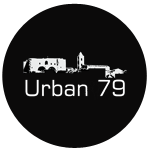Gastronomy is known to be one of the key factors that attract foreign tourists to Italy. What are Bernalda’s typical products?
The typical first course is pasta with green beans and ricotta cheese, dating back to the mid-twentieth century, probably, as in many cases, created to try to survive the difficulties left by the post-war period. It is prepared with black-eyed green beans to which tomato puree and ricotta cheese are added.
A sagra in the hamlet of Metaponto is also dedicated to pasta with green beans and ricotta cheese.
For those with a sweet tooth, Bernalda offers scorzette, which are prepared with egg white, hazelnuts and melted dark chocolate. It was created by the pastry chef Vincenzo Spinelli in the 1970s. The name derives from “scorz d’ l’arvl” (which in the local dialect means “bark of the tree”).

In reality, there is also a variant, where instead of hazelnuts and dark chocolate we find almonds and white chocolate. Judging which is better, of course, we appeal to the taste of each.
The Basilicata is a region that has made its food and wine peculiarities a great strength of the tourist offer.
Among the typical dishes, some have very ancient origins.
Our food and wine itinerary begins with baked bread : it is stale bread for a few days, soaked in water and then seasoned with oil, salt and oregano, baked and served hot.
Another way to recall the tradition is to boil the beets in water and mix them with the breadcrumbs fried with oil and garlic.
From Vulture DOP Oil we certainly pass through the crusco pepper, characterized by a low water content, whose peduncles are threaded with string to obtain necklaces called “serte”. After rapid drying according to a strictly natural method, the peppers are fried in extra virgin olive oil to obtain a crunchy and fragrant product, ideal for garnishing first courses, but also red meats or cod.
The crusco pepper, if ground, is in fact ideal as a condiment for many dishes and is also added to the mixture of cheeses and cured meats, as well as to flavor a good pasta with sauce together with garlic, oil and fried breadcrumbs.
The long journey among local products continues with red eggplant, pecorino cheese and podolico caciocavallo.
The mushrooms, horse meat and cod are on our way, and a worthy tasting cannot end without having tasted the Aglianico del Vulture, one of the most prestigious DOC red wines on the national wine scene.
The menu based on recipes with Aglianico is rich and wonderfully pleasing to all palates: fried grapes, “drunk” fusilli, up to pork tenderloin with Aglianico and chestnut honey, lamb with freshly fried, and aglianico pecorino fritters, or black grape desserts.
Some of the typical traditional dishes that also embrace the culture of brigandage are ciambotta, healthy potatoes, lagane and chickpeas, bride’s thigh and pitta with ricotta and cooked must.
Ciambotta
In the south it means mixing things up, “ciambottiare”. There is the ciambotto of fish, meat and vegetables, because in the end the ciambotto is not the ingredients but the bread that is filled with flavours. In Terranova di Pollino called ciambottella, it is usually filled with peppers, tomato, sausage and eggs. The recipe that follows is typical of the Lucanian Dolomites, a tribute to the brigands Crocco and Ninco Nanco.
In the ciambotta the bread becomes a container and accompaniment.
Lagane and chickpeas
It is the typical dish of the brigands. In fact, it seems that in the oral stories of popular traditions the brigands, present in the second half of the 1800s in the woods of Gallipoli Cognato, were nicknamed “mangialagane”, the main dish of their tables.
Thigh of the bride
Legend has it that the local nobles, counts, marquises or just large landowners, could demand the first night right from their peasants.
At the end of the meal, the bridegroom was given the “coscia della bride” (bride’s thigh), a whole leg of lamb, set aside and cooked over low heat, often only with the reflection of the brick. Later, with the discovery of the tomato, it was transformed into ragoùt (zita ragone).
Other typical products of the Lucanian area: fiordilatte from the Southern Apennine, padraccio del Pollino, casieddu, treccione, burrino, cacioricotta, sheep’s toma; soppressata, Lucanian sausage from Cancellara, pezzenta, ventresca; Sarconi beans, Senise peppers, poverello beans from Rotonda, Matera bread, marroncino, fresh pasta, Ofanto cauliflower, Sanseverinese potatoes, black truffle (scorzone), orange peel and white Tursi percoco.

